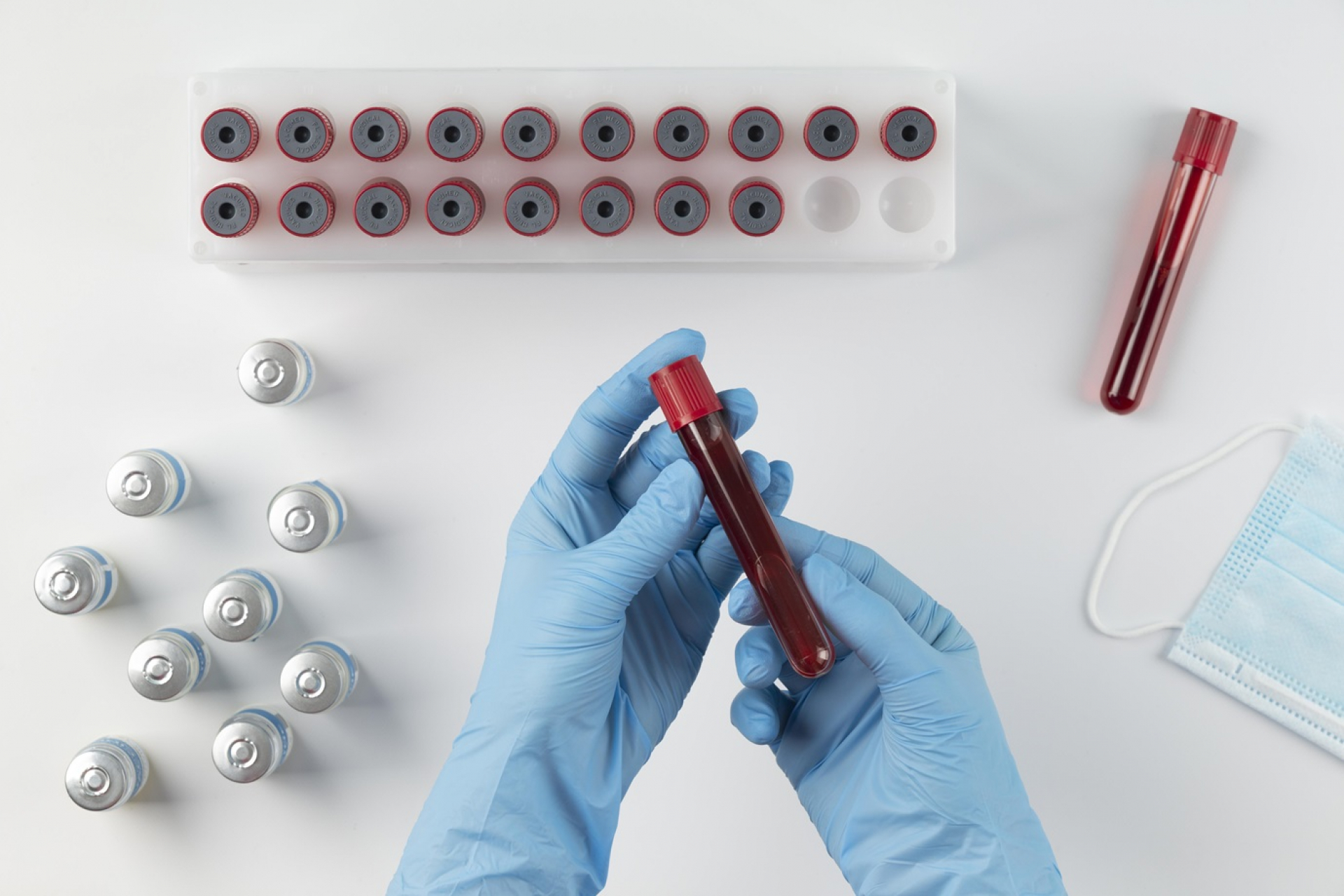Hemoglobin (Hb) is the protein found in red blood cells that carries oxygen throughout the bloodstream. Hb electrophoresis is a test healthcare providers use to determine how much of each type of hemoglobin you have in your blood.
What is Hemoglobin Electrophoresis?
Hemoglobin electrophoresis is utilized to assess the different forms of hemoglobin found in your red blood cells (RBCs). A change, or mutation, in one of the genes that make hemoglobin causes normal red blood cells to become deformed. Conditions such as anemia, sickle cell anemia, and thalassemia occur when these damaged cells break down.
The high-performance liquid chromatography (HPLC) Hb electrophoresis test gives healthcare providers detailed information about abnormal types of hemoglobin and blood disorders. HPLC is a highly sensitive and accurate technique to determine what types and how much of each type of hemoglobin you have in your body.
Hb electrophoresis is key to determining and diagnosing blood disorders, and it is also used for newborn screenings that are done looking for possible indicators of sickle cell anemia or other rare, severe illnesses.
Types of Hemoglobin
Hb electrophoresis is a widely used technique for analyzing various types of hemoglobin, including:
Hemoglobin Types A11 and A2 (HgbA1 and A2): Hemoglobin A11 makes up most hemoglobin in normal red blood cells. Hemoglobin A2 makes up approximately 2% to 3% of the total hemoglobin present in the body.
Hemoglobin Type F (HgbF): HgbF is the predominant form of hemoglobin present in fetuses before being substituted by HgbA following birth. Elevated levels of F-type hemoglobin in adults may suggest an abnormal hemoglobin level.
Hemoglobin Type S (HgbS): HgbS leads to sickle cell anemia, a condition characterized by the production of rigid, sickle-shaped red blood cells that are unable to move easily through blood vessels. This can lead to obstructed blood flow, pain, increased susceptibility to infections, hemolytic anemia, and impairment or injury to organs because of the blockage or deprivation of oxygen supply caused by the sickled cells that are trapped in organs and tissues.
Hemoglobin C (HgbC): HgbC is associated with hemolytic anemia, a disorder marked by the early breakdown of red blood cells, or a shorter lifespan in comparison to normal RBCs.
Who Should Get Hemoglobin Electrophoresis Done?
Testing may be necessary if you are experiencing symptoms of a hemoglobin disorder like anemia or sickle cell disease.
Symptoms of anemia:
- Shortness of breath
- Weakness
- Headache
- Dizziness
- Irregular heartbeat
Symptoms of sickle cell disease:
- Painful swelling of the hands and feet
- Infants may experience tiredness or irritability due to anemia resulting from sickle cell disease
- Growth issues in children
- Jaundice
- Severe pain
What is the Purpose of Hemoglobin Electrophoresis?
Healthcare providers may suggest a hemoglobin electrophoresis test to identify any abnormal hemoglobin present in your body. This test is typically conducted for various reasons, such as:
- To diagnose blood disorders
- To monitor treatment
- To screen for genetic conditions
- Having a family history of a blood disorder
Hemoglobin Electrophoresis Test Procedure
Hemoglobin electrophoresis uses electrical charges to separate the different types of hemoglobin, allowing healthcare providers to evaluate the quantity of each type of hemoglobin in relation to normal levels. Each major type of hemoglobin has a different electrical charge. The below steps detail the procedure for conducting this test.
- Healthcare providers deposit the dissolved red blood cells from the sample specimen onto a strip made of cellulose.
- Next, a lab technician inserts the sample strip into an electrophoresis chamber, a machine that passes electrical currents through the sample.
- Hemoglobin variants respond to the electrical current by separating from one another, and after some time has passed, different bands of differently coloured hemoglobin variants will be visible.
- Abnormal hemoglobin types can indicate a blood disorder such as sickle cell anemia if, for example, your hemoglobin type S is not the same as the normal type S.
Interpretation of the Hemoglobin Electrophoresis Test Results
|
Parameters ( in adults) |
Normal hemoglobin percentage |
|
Hemoglobin A |
95% to 98% |
|
Hemoglobin A2 |
2% to 3% |
|
Hemoglobin F |
1% to 2% |
|
Hemoglobin S |
Absent |
|
Hemoglobin C |
Absent |
|
Parameters (in infants) |
Normal hemoglobin percentage |
|
Hemoglobin F (newborn) |
50% to 80% |
|
Hemoglobin F (6 months) |
8% |
|
Hemoglobin F (> 6 months) |
1% to 2% |
The values listed above are standard measurements used to interpret the results of the tests. It is important to note that the normal ranges of values may differ slightly between various laboratories, as some labs use different measurement units.
Deviation from normal levels indicates the following:
- A slight decrease in Hb A or a moderate level of Hb S (around 40%) could suggest the presence of sickle cell trait. In this condition, the individuals have one sickle cell gene and one normal gene.
- Elevated levels of Hb S and Hb F (up to 10%) with the absence of Hb A could suggest the presence of sickle cell disease, resulting in intense pain and respiratory challenges.
- Elevated levels of Hb C in the absence of Hb A could suggest the presence of hemoglobin C disease, a condition characterized by mild anemia, enlarged spleen, and joint pain.
- Elevated Hb F and low or absent Hb A levels could suggest the presence of beta thalassemia major. This disorder impacts the synthesis of hemoglobin and can manifest with varying degrees of severity in its symptoms.
Hemoglobin, found in red blood cells, is the protein that carries oxygen. A Hb electrophoresis blood test is done to check different types of hemoglobin. Normal hemoglobin carries oxygen well and delivers it effectively; some abnormal types do not work as well. Your healthcare provider may order this test to help diagnose diseases related to abnormal types of hemoglobin, such as sickle cell disease or thalassemia.


